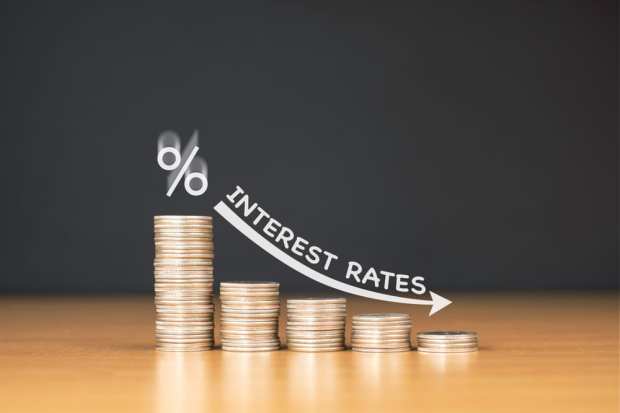Interest Rates to Pinch Alt Lenders and Digital Banks

Welcome to the unchartered territory for the lending landscape – at least for those who were born and came of age in the new Millennium, in the digital age…
…and post the Great Recession.
They say history doesn’t repeat itself, but it does indeed rhyme. For the neobanks that are now encountering precipitously falling interest rates, the question becomes: How do you keep the customers coming in the (virtual) door?
This piece is being written on a Tuesday that has seen stocks soar nearly 5 percent. That’s a significant reversal of the nearly 8 percent loss seen the day before.
The Treasury yields also rose, and, for example, the yield on the 10-Year stood at just under 80 basis points, up from sub 50 basis point nadirs earlier in the week. Fed rates, of course, were cut to a range of 1 percent to 1.25 percent.
Time to breathe a sigh of relief, perhaps, but not too fast. Looking at the worst day since 2008, in the rearview mirror takes eyes off of looking at what’s ahead.
The trend has been — down. And across the broader financial landscape, falling central bank rates and falling rates, in general, tend to compress the savings account rates that have been a key tailwind for deposit growth for traditional banks, and also for lenders that have used relatively high rates to spur consumer deposits, and then, possibly, cross-pollination to other financial products and services.
Key among those banks who have promised higher rates: Marcus, the Goldman Sachs banking unit, done digitally, that has staked its claim here and across the Pond with high yielding products. A visit to the site indicates that Marcus APY is 1.7 percent, leagues better than the single-digit basis points that peers offer, but down from 2.2 percent seen in July of last year. At the same time, fixed-rate loans are, well, fixed rate.
Hitting A Pause Button
Another example of the pressures that come from the coronavirus — because after all, the virus is what has been slowing the economy, which led the Fed to cut rates, which now pressures lenders.
In Australia, Information Age reported that neobank Xinja said it would no longer sign up new holders for its high-interest Stash account. That decision came in the wake of the Australian central bank’s decision to cut interest rates by 50 basis points as COVID-19 continued to spread.
Per Xinja: “Because these are uncertain times for everyone, we are holding our rate steady, at 2.25 percent, but hitting the pause button on customers opening Stash accounts.
The bank added: “No more new Stash accounts means no increase in cost to Xinja and means we can protect the interest rate for people already with a Stash account.”
The neobank has said that 25,000 customers deposited over $300 million into those Xinja Stash accounts since its launch only this year. The company is also looking to raise $50 million from investors.
Here then, is an interesting wrinkle. Stopping new business from coming in the door implies that the revenues you make, per unit, are shrinking, while costs are a sore spot. Reminds us, in a way, of that old joke: “Money lost on every sale, but we make up for it in volume.”
Every joke has a kernel of truth, and here’s that kernel, at least when it comes to banking. Dramatic rate shifts mean banks, typically laggards to react, see smaller margins as they pay costs on consumer deposits and yields on loans get reeled in, too. Size matters in banking, and having large mortgage portfolios helps a bit, too, as giants like JPMorgan and others do. That’s because a flurry of refinancing brings in cash flow.
The banks that have minuscule interest rates on savings products conceivably have less of a spread shock than those like Marcus and others who promise high rates but then have to gradually reel them in, in increments so as not to chase away an existing installed base (and, really, in a true economic calamity, it might not be far-fetched to see a bustle toward the marquee names that survived the Great Recession and actually have, well, branches you can visit (and pull cash from).
Alt Lending Too
What of the alternative lenders? These are the smaller, sometimes platform-based, companies that have gotten financial backing in peer to peer or institutional settings. In a report detailing consumer credit origination, TransUnion estimated that the share of personal loan balances held by FinTechs was 38 percent of a total of $138 billion, up from a 5 percent stake in 2013. The name of the game here, too, is spread. The FinTechs take in capital, the capital makes loans, which, though well above benchmark rates, is below credit card rates.
The question becomes: What happens if consumer demand for loans dries up? The other side of the equation is: what happens when investor funding dries up, when the market says thanks, we’re good for now?
In at least a bit of acknowledgment that capital does not come cheap, Lending Club took the step earlier this year of buying Radius Bank, an online bank that offers checking and savings accounts. The deal has yet to be closed, by Lending Club management has signaled the desire to gather up cheaper sources of funding.
The financial services model, whether online, platform-focused, branch-based or an amalgamation of it all, will be tested by low rates that may go lower still.
